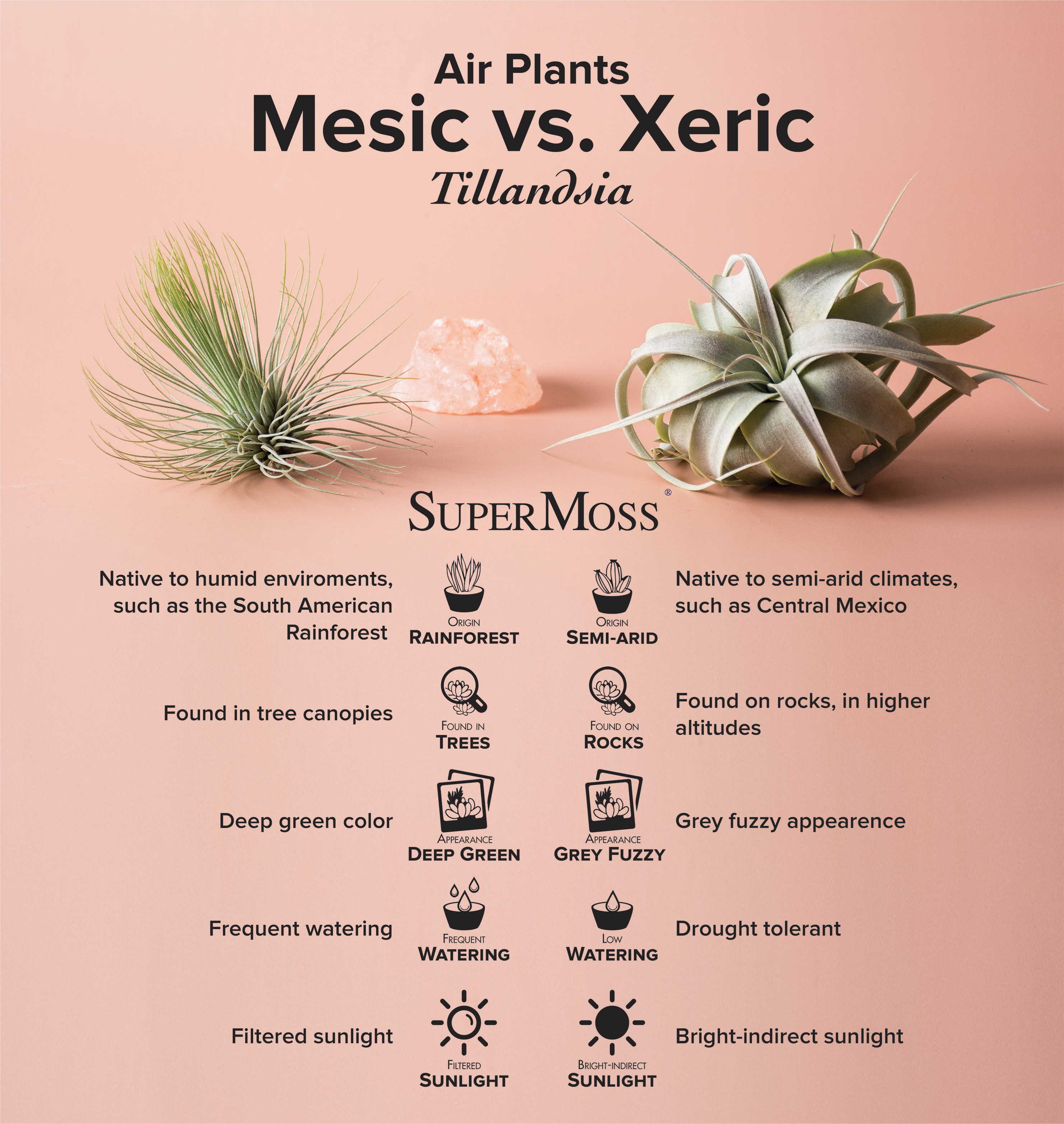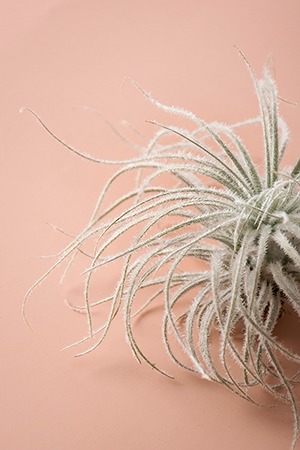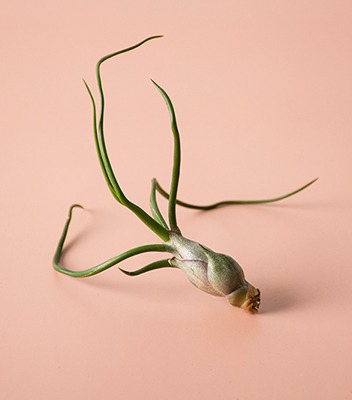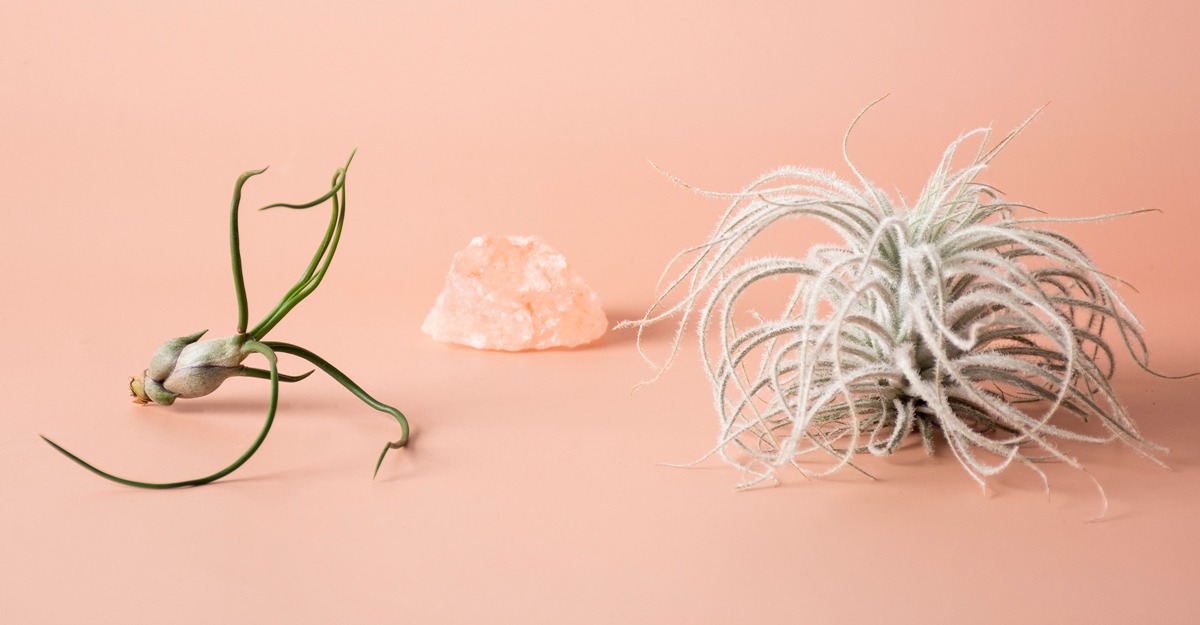Air Plant Care: Xeric vs. Mesic
When it comes to air plants, there are generally two major types of species- xeric and mesic air plants. Most of the air plants we carry at SuperMoss are xeric varieties, meaning they tend to be a bit more drought-friendly and hearty. Therefore, before purchasing an air plant, you may want to determine what type it is and if you can provide it with the correct care requirements.

Xeric Air Plants
Xeric Air Plants originate from semi-dry, arid climates- such as Mexico and Central America. In nature, these plants are almost always exposed to full sunlight, often found clinging on to cacti and rocks. They are an excellent choice if you live in a dry climate, like California.

Xeric air plants are characterized by their fuzzy-grey appearance. The silver hair-like features are called trichomes and thanks to this adaption, they are able to survive droughts. The abundance of trichomes on the leaves of xeric air plants allow them to absorb water and minerals from their environment. Trichomes are most noticeable on the Tillandsia Tectorum Ecuador (pictured on the right).
Care
Light
Because of the hot and dry conditions of their native habitat, xeric air plants prefer a bit more bright sunlight compared to mesic air plants. Moreover, they can even tolerate a couple hours of direct sunlight, just be sure to monitor the plant, as too much afternoon light can burn their leaves.
Water
Given that Xeric Air Plants are drought-tolerant, they do not require much water to survive. They can be soaked when dry, however a light misting every 1-2 weeks will suffice. Again, the climate you live in will determine how often these plants need water.
Humidity
Xeric Air Plants are used to low humidity and dry conditions. The normal conditions in your home should be just fine for these species.
Species
Common xeric varieties include:
- T. Xerographica
- T. Ionantha (all varieties)
- T. Caput Medusae
- T. Tectorum Ecuador
Mesic Air Plants
Mesic air plants are native to humid climate zones, such as the South American Rainforest and the Southeastern United States. They are often found in tree canopies or along river beds, where they are exposed to only filtered sunlight. They are also exposed to heightened moisture in the air, as well as frequent rain showers. Mesic air plants are almost always a deep green color, with curved leaves. (see T. Bulbosa Guatemala below)
Care

Light
In nature mesic air plants are often shaded by larger trees, therefor only being exposed to dappled sunlight. Because of this, you will want to keep them in a place that receives indirect sunlight. We recommend staying away from direct sunlight completely.
Water
Mesic air plants tend to be on the more “wet” side. This means that they are a bit more water intensive compared to their counterparts. The best method for watering these types of air plants is by soaking weekly for 20-30 minutes.
Humidity
Humidity is another factor to pay attention to for mesic air plants. Because they are a tropical plant, they will thrive the most when given a lot of humidity. This can be achieved by adding a humidifier to your space or even keep them in your bathroom if there is enough light and air flow.
Think rainforest tree cover and the Florida humidity, these are the kind of conditions you will want to mimic for your mesic air plant.
Species
- T. Bulbosa Guatemala
- T. Andreana
- T. Butzii
Final Note
When it comes to indoor air plant care, we encourage you to explore the species natural habitat. To sum up, think desert conditions for xeric air plants and humid, wet conditions for mesic air plants. Mimicking this environment in your home will be sure to give you the best results.
Happy growing!
Cheers,
SuperMoss






Comment (1)
[…] sold in the houseplant trade are the Tillandsia ionantha and the Tillandsia xerographica. Both are xeric air plants, meaning they cope with low moisture. The xerographica’s leaves are thick, wide, and soft to […]
Comments are closed.